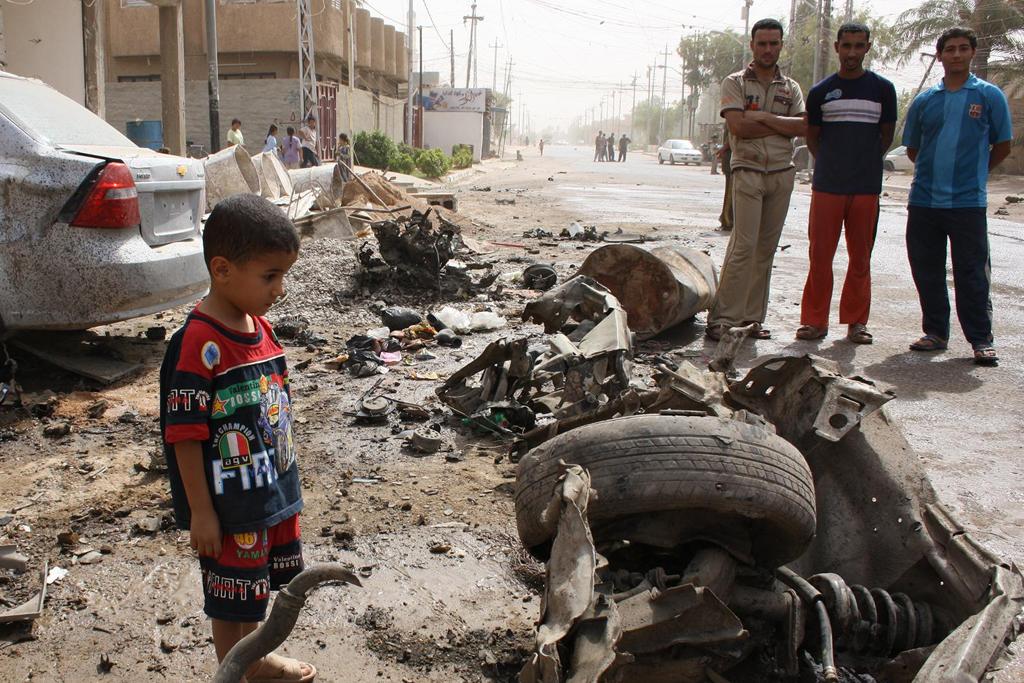Fallujah birth defects a result of US weapons?
Iraqis gather at the site of a blast in Fallujah, west of Baghdad, on August 8, 2010. Masked gunmen robbed a currency exchange owner in the city and set off their empty explosives-packed car when police tracked them down, killing two people, officials and the victim said.
Although the United States military has officially left Iraq, the legacy of its weapons continues to haunt Fallujah, the site of two intense battles in 2004.
A new report by Al Jazeera examines the link between weapons and chemicals such as depleted uranium and white phosphorous left over by the military and a significant rise in birth defects, abnormalities and fatalities.
Doctors in Fallujah were noticing a significant rise in birth defects as early as Nov. 2009, when the Guardian reported on children born with birth defects, including a baby born with two heads and others with multiple tumors and nervous system defects. At that time, the cases were still inexplicable, with no real evidence on what could be causing the abnormalities.
More on GlobalPost: Camp Victory: US hands over military headquarters to Iraq
The BBC reported of hearing anecdotal evidence of doctors advising women not to have children in March 2010. The debris that resulted from the major American offensives in 2004 was bulldozed into the riverbank of the river that serves as the main source of drinking water for the town.
Al Jazeera talked to a pediatrician, Dr. Samira Alani who has been keeping track of the cases since late 2009:
As of December 21, Alani, who has worked at the hospital since 1997, told Al Jazeera she had personally logged 677 cases of birth defects since October 2009. Just eight days later when Al Jazeera visited the city on December 29, that number had already risen to 699.
Alani showed Al Jazeera photos of “babies born with cleft palates, elongated heads, a baby born with one eye in the centre of its face, overgrown limbs, short limbs, and malformed ears, noses and spines.”
;
Results from analysis of hair samples from babies with birth defects that were sent to Germany reveal trace amounts of mercury, uranium, bismuth, according to a study conducted by Dr. Alani and Dr. Christopher Busby. In July 2010, Busby had published a study illustrating the incidence of childhood cancer rising 12 times in Fallujah.
A comparison of birth defect incidence rates in Fallujah to those in Hiroshima and Nagasaki, Japan, after the use of the atomic bomb showed that while the rates were 1-2 percent in Japan, the current logs from Iraq are at 14.7 percent.
More on GlobalPost: Opinion: Democracy and depleted uranium
Human Rights Watch lists the effects of white phosphorous as:
Initial injuries include thermal and chemical burns, respiratory damage, circulatory shock, asphyxiation, and carbon monoxide poisoning, often leading to a slow and painful death. Victims who survive may suffer long term from intense pain, severe infections, organ failure, lowered resistance to disease, lifelong deformity and disability, psychological trauma, and an inability to reintegrate into society.
In Fallujah’s case, no comprehensive study has been undertaken by the Iraqi government or the American military.
